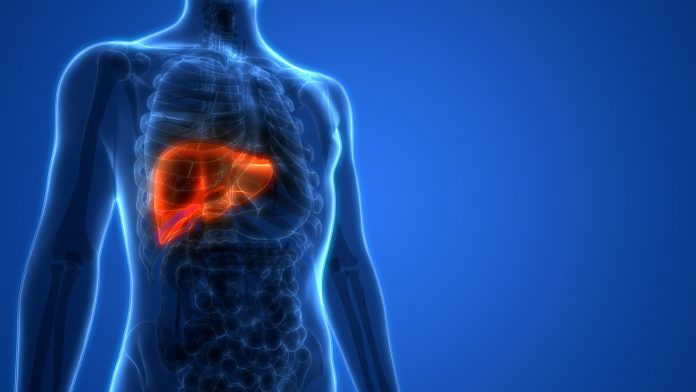
With one in five people at risk of developing liver disease, Dr Michael Lutz discusses what can be done to tackle this growing threat.
According to the British Liver Trust, liver disease is the leading cause of death in adults aged between 35 and 49 years old. Yet, while this statistic is indeed shocking, it is equally worrying to read that 90% of liver disease cases are in fact, preventable. Our livers are integral to our overall wellbeing, responsible for carrying out over 500 essential functions in the body, such as helping us to detoxify harmful substances from our blood, process food, regulate hormones and fight infection.
Excess alcohol, a diet high in processed foods as well as sedentary behaviour are some of the key risk factors associated with liver disease, and while some early-stage liver issues can be alleviated through lifestyle modifications, it can often be difficult to spot symptoms until the liver is badly damaged. Speaking to Health Europa, Dr Michael Lutz, CEO and Managing Director of HepaRegenix, reflects on the growing burden of the disease, the challenges around diagnostic procedures and the necessity for reliable, novel therapies that can support patients with acute and chronic liver problems.
Can you outline some common types of liver disease and how much of a burden these are currently on healthcare systems?
There are a number of liver-related diseases and two key factors that can heavily influence their development – food and alcohol, or a combination of the two. Over the course of the disease’s progression, early stages of deterioration are referred to as non-alcoholic fatty liver disease (NAFLD), including non-alcoholic steatohepatitis (NASH). These define a range of conditions caused by a build-up of fat in the liver and is usually seen in people who are overweight. NAFLD/NASH have four key stages (F1-F4), each showing different clinical manifestations and necessitating different diagnostic procedures. As the liver becomes inflamed, you can see the first signs of steatosis whereby fat builds up in the liver cells (F1), and if left untreated or undiagnosed, this can develop into fibrosis which can cause scarring of the liver and adjacent blood vessels (F2).

The most severe cases of liver disease are stage F3 (advanced liver fibrosis) and stage F4 (cirrhosis). Also known as end-stage liver disease, cirrhosis manifests as scarring and irregular bumps or nodules which can affect the liver’s functionality. There are two types of cirrhosis known as ‘compensated’ and ‘decompensated’. One of the key difficulties with this stage of liver disease is that patients who have compensated cirrhosis may not show any symptoms because their liver is able to function relatively well despite being damaged. Conversely, the decompensated stage means damage to the liver is so severe that it cannot function adequately and this, in turn, can lead to many other health complications including hepatic encephalopathy and bleeding varices. At this stage, patients would need a liver transplant within two to three years.
Patients with late-stage fibrosis, or even early-stage cirrhosis, could be stable for 10 to 20 years. However, the impact of other health problems incurred, such as hepatic encephalopathy, can cause the liver, as well as other organs, to deteriorate and lead to acute liver failure.
Are there certain demographics or groups who are particularly susceptible to the disease or is lifestyle the main driver of the condition?
The impact of diet and lifestyle on the liver have been well documented for many years. There are reports that have alluded to fast foods being the source of the next US pandemic and that in the next 10 to 20 years there will be a huge increase in the number of people suffering from non-alcoholic steatohepatitis (NASH), late-stage fibrosis or cirrhosis. This means there may be an organ shortage because more people will need a liver transplants.
The impact of the COVID-19 pandemic also saw a substantial increase in people turning to alcohol to overcome the ‘COVID blues’, particularly in the UK and the US.
Can you outline some of the key challenges associated with diagnosis and screening? Does more need to be done to raise awareness?
Diagnosing the severity of fibrosis or cirrhosis would require a liver biopsy, and then subsequent histopathology assessments, which can be very difficult to ascertain where to take the liver biopsy in order to get a clear, valid result.
Although NASH can create opportunities for innovation, due to regulatory reasons, many pharmaceutical companies have failed in late-stage NASH trials because of the challenging nature of liver biopsies and histopathology. Our company is part of the Liver Forum which was created by the pharmaceutical industry and a couple of other partners to facilitate drug development for the treatment of liver disease. Last year, there was a session where people said that histopaths, and the results, is like rolling the dice; three pathologists can take a sample, and each can yield different results.
In terms of raising awareness, there are effective initiatives to encourage healthier lifestyles; we have seen a gradual decline in the number of people who smoke over the last 10 to 15 years and we are seeing similar initiatives now around sugar taxes. Advocating a healthy lifestyle that incorporates more exercise, less alcohol and red meat is a starting point but in some countries like the US, the scale of liver disease is growing so rapidly that interventions are urgently needed. In the last 10 years alone cases of liver disease in the US have increased by about 25% and we expect this to continue increasing if nothing is done.
On your website you state that there is a huge unmet medical need mainly due to the lack of treatment options. Can you share any recent innovations or developments that might improve the success rate for treating liver disease?
When I joined HepaRegeniX in 2019 the NASH space was very crowded with well over 200 companies developing treatments. However, since then a lot of these companies’ trials have failed and they have left the NASH space. Our company has embarked on other ventures that focus on more advanced liver diseases. In the earlier stages of some liver diseases, the regulatory authorities are still under the belief that if you change your diet and lifestyle, you can halt the disease and essentially heal yourself. Therefore, they are reluctant to motivate and fund companies to create drugs for these patients. Supporting patients that suffer from acute or chronic liver failure is a different story and there are more and more people who will need this type of advanced care. We are already hearing the term ‘liver tsunami’ reflecting the rapid increase in the number of people requiring treatment. Likewise, some reports are predicting that liver cancer will be the most prominent cancer in the next 20 years.
There are still companies that are developing treatments for NASH as well as those trying to ‘clean out’ liver fat or reduce the impact and early symptoms of NAFLD, including treatments for obesity. There are also companies who are trying to revert and stop fibrosis from developing further. Regenerative medicine companies like ours are looking at more severe stages of liver disease to support those patients in need and this is our goal with upcoming clinical trials.
In development, HepaRegenix is solely working on advanced liver diseases, can you please explain how your therapy approach differs from currently approved therapies and the most advanced compounds currently in clinical development?
Current therapies of chronic liver disease focus on reducing or eliminating harmful exogenous agents and thereby may slow down disease progression. For end-stage liver disease, transplantation currently is the only curative option. Currently, no therapy can restore the almost endless capacity for regeneration of healthy liver cells. This is however exactly the approach we follow at HepaRegeniX: we aim to unlock the regenerative capacity of hepatocytes. Our target is the Mitogen-Activated Protein (MAP) Kinase Kinase 4 – in short: MKK4. The foundations for this first-in-class approach were laid in the laboratory of Professor Lars Zender at the University Hospital of Tuebingen. In cooperation, we have developed a small molecule-based platform of MKK4 inhibitors. From extensive preclinical studies we know that restoring the regenerative capacity though MKK4 inhibition is possible even in severely diseased livers. In fact, the evidence we were able to collect in both acute and chronic liver diseases was very convincing and fully confirmed the therapeutic rationale. Most recently, we have been reporting strong benefits with respect to survival and improvement of key functional liver parameters in a collaboration with the Mayo Clinic. As we embark on our First-In-Human phase 1 trial started in August 2021, we see the great potential of MKK4 for treating patients with advanced liver diseases.
This article is from issue 20 of Health Europa Quarterly. Click here to get your free subscription today.









